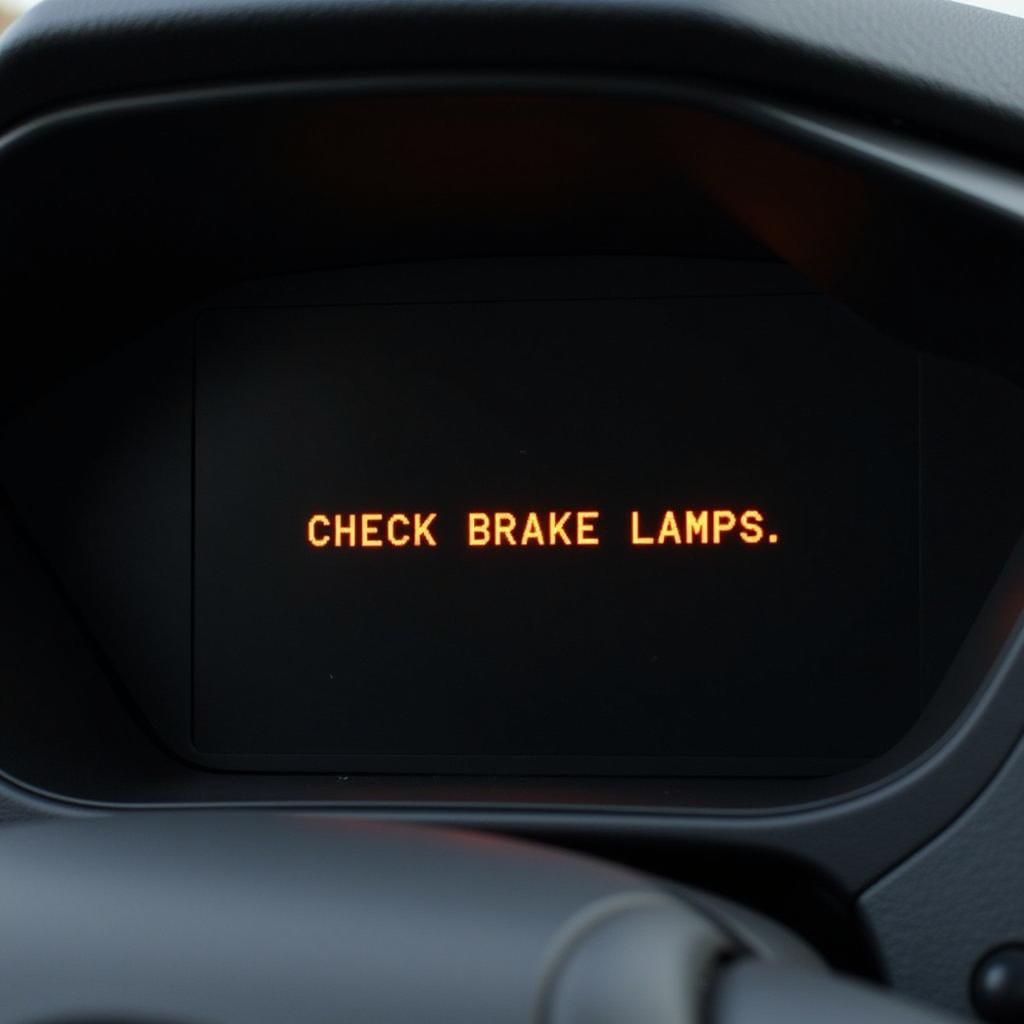Experiencing a sudden illumination of all your Jeep Wrangler’s brake warning lights can be a nerve-wracking experience. This issue usually points to a problem with your braking system and should be addressed immediately to ensure your safety on the road. As an expert in automotive electrical engineering specializing in remote diagnostics, programming, and software installations for vehicle repair, I’m here to guide you through the potential causes and solutions.
Let’s dive into the most common reasons why your Jeep Wrangler might have all brake warning lights on.
Common Causes of All Brake Warning Lights On
There are several potential culprits behind this issue, and understanding them can help you narrow down the source of the problem:
- Low Brake Fluid: This is one of the most common and easiest issues to fix. When brake fluid is low, it often indicates a leak in the system, which needs to be addressed promptly.
- Faulty Brake Light Switch: This switch is responsible for activating your brake lights when you press the pedal. A malfunctioning switch can disrupt the entire system, causing all the warning lights to illuminate.
- ABS Module Issues: The Anti-lock Braking System (ABS) module plays a vital role in preventing wheel lockup during braking. If it malfunctions, it can trigger warning lights on your dashboard.
- Wiring Problems: Corroded or damaged wiring within the braking system can disrupt the signal flow, leading to multiple warning lights turning on.
- Faulty Speed Sensor: Your Jeep Wrangler uses wheel speed sensors for various functions, including ABS. A faulty sensor can disrupt these systems and activate warning lights.
Diagnosing the Problem
Now that you understand some potential causes, let’s look at how to diagnose the exact issue with your Jeep Wrangler:
- Check the Brake Fluid Level: This is the first and easiest step. Open the hood and locate the brake fluid reservoir. If the fluid level is below the minimum mark, it needs to be topped up.
- Inspect the Brake Light Switch: Locate the brake light switch, usually above the brake pedal. Check for any signs of damage or wear. You can test the switch by pressing and releasing the brake pedal while observing if the brake lights illuminate.
- Scan for Trouble Codes: Use an OBD-II scanner to read any stored trouble codes in your Jeep Wrangler’s computer. These codes can provide valuable insights into the specific area of the braking system that’s experiencing problems.
- Check the Wiring: Inspect the wiring harnesses and connections related to the braking system for any signs of damage, corrosion, or loose connections.
- Inspect the Speed Sensors: Visually inspect the speed sensors located at each wheel for any obvious damage or debris.
Solutions and Repairs
Once you’ve diagnosed the problem, here are some potential solutions:
- Add Brake Fluid: If the brake fluid level is low, carefully add the recommended brake fluid until it reaches the maximum mark on the reservoir. However, if you notice a consistent need to top up brake fluid, it indicates a leak that needs immediate professional attention.
- Replace the Brake Light Switch: If you suspect a faulty brake light switch, replacing it is a relatively straightforward process, even for beginners.
- Repair or Replace the ABS Module: Depending on the specific issue with the ABS module, it might be possible to repair it. However, in many cases, replacement might be the more cost-effective option. It’s best to consult with a qualified mechanic for this.
- Repair or Replace Damaged Wiring: If you discover damaged or corroded wiring, repairing or replacing the affected sections is crucial to restore proper signal flow.
- Replace Faulty Speed Sensors: Replacing a faulty speed sensor is usually a straightforward process.
 Mechanic Inspecting Jeep Wrangler Brake System
Mechanic Inspecting Jeep Wrangler Brake System
“Remember,” says master mechanic John Davis, “addressing brake issues promptly is paramount. Ignoring warning signs can lead to more extensive and costly repairs down the road. Regular maintenance and timely inspections are your best bet to ensure a safe and enjoyable driving experience.”
Conclusion
Experiencing issues with your Jeep Wrangler’s braking system can be concerning. However, by understanding the common causes and following the troubleshooting steps outlined above, you can often identify the problem. If you’re unsure about any aspect of brake repair, it’s always recommended to consult with a qualified mechanic to ensure your safety and prevent further damage to your vehicle. Regular maintenance and timely inspections of your Jeep Wrangler’s braking system are essential for safe and worry-free driving.
Need help with your Jeep Wrangler’s brake warning lights? Click here for more information on troubleshooting brake issues.
FAQs
1. Can I still drive my Jeep Wrangler if the brake warning light is on?
It’s highly discouraged to drive your Jeep Wrangler if the brake warning light is on. This light indicates a potential problem with your braking system, and continuing to drive could be dangerous.
2. How often should I check my brake fluid?
It’s a good practice to check your brake fluid level at least once a month. However, if you notice a sudden drop in brake fluid level, it’s crucial to have your braking system inspected for leaks immediately.
3. How much does it cost to replace a brake light switch?
The cost of replacing a brake light switch varies depending on the make and model of your vehicle. However, you can typically expect to pay between $50 to $150 for the part and labor.
4. Can I replace a brake light switch myself?
Replacing a brake light switch is a relatively straightforward repair that many car owners can do themselves. However, it’s essential to have the correct tools and follow the proper procedures.
5. What should I do if all my brake warning lights come on after replacing a brake light switch?
If all your brake warning lights illuminate after replacing the brake light switch, it’s possible that the new switch is faulty or that there’s another underlying issue with your braking system. It’s best to consult a mechanic to diagnose and resolve the problem.


